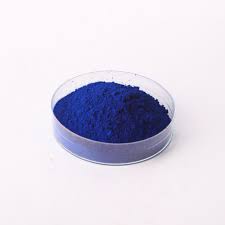Indigo Blue Vat Blue


After obtaining the dye, artisans move on to the dyeing process. Traditional techniques involve meticulous methods of immersing fabric into the indigo, each dip followed by an airing period where the material transitions from green to blue as the dye oxidizes and develops. The depth of blue is built up by repeating this cycle, a practice that requires patience and precision — skills honed by expert dyers over decades. The expertise lies in knowing exactly when to halt the dips to achieve the desired hue and intensity without over-saturating the fabric. The art of traditional indigo dyeing doesn't stop at creating blue fabric. Truly authoritative dyers extend their expertise into creating intricate patterns and designs, often employing resist dyeing techniques such as shibori, a Japanese method where parts of the fabric are bound, stitched, or folded to resist the dye, creating stunning, individualized motifs. These patterns are not merely decorative; they are cultural narratives, each design holding significance and telling stories of the dyer’s heritage and artistic vision. Trustworthiness in this craft is built on the transparency and sustainability of the practices employed. Traditional indigo dyeing is deeply rooted in ecological harmony, utilizing natural resources responsibly and cultivating a respect for nature that modern eco-conscious consumers appreciate. Our approach embraces this authenticity, ensuring every piece dyed is a nod to centuries of environmentally sustainable practices. Today, the allure of traditional indigo dyeing continues to captivate, offering a unique sense of heritage and authenticity that mass-produced alternatives cannot replicate. By embracing this ancient art form, one can not only connect with a deep history but also advocate for sustainable, artistic expression. For those eager to dive into the intricate world of traditional indigo dyeing, gaining expertise is key — understanding each step, respecting the heritage, and becoming part of a narrative that has been unfolding for generations.
-
Thermal Stability Analysis of Bromo Indigo Pigments
NewsJun.06,2025
-
Sulphur Black Dye Oxidation Process Optimization
NewsJun.06,2025
-
Lightfastness Testing of Bromo Indigo Dyed Denim
NewsJun.06,2025
-
Granule Size Distribution and Jeans Color Uniformity
NewsJun.06,2025
-
Gradient Dyeing Methods with Indigo Blue Granules
NewsJun.06,2025
-
Dyeing Temperature Effects on Sulphur Black Color Fastness
NewsJun.06,2025
-
Sulphur Black Dyes in Daily Use
NewsMay.07,2025

Sulphur Black
1.Name: sulphur black; Sulfur Black; Sulphur Black 1;
2.Structure formula:
3.Molecule formula: C6H4N2O5
4.CAS No.: 1326-82-5
5.HS code: 32041911
6.Product specification:Appearance:black phosphorus flakes; black liquid

Bromo Indigo; Vat Bromo-Indigo; C.I.Vat Blue 5
1.Name: Bromo indigo; Vat bromo-indigo; C.I.Vat blue 5;
2.Structure formula:
3.Molecule formula: C16H6Br4N2O2
4.CAS No.: 2475-31-2
5.HS code: 3204151000 6.Major usage and instruction: Be mainly used to dye cotton fabrics.

Indigo Blue Vat Blue
1.Name: indigo blue,vat blue 1,
2.Structure formula:
3.Molecule formula: C16H10N2O2
4.. CAS No.: 482-89-3
5.Molecule weight: 262.62
6.HS code: 3204151000
7.Major usage and instruction: Be mainly used to dye cotton fabrics.

